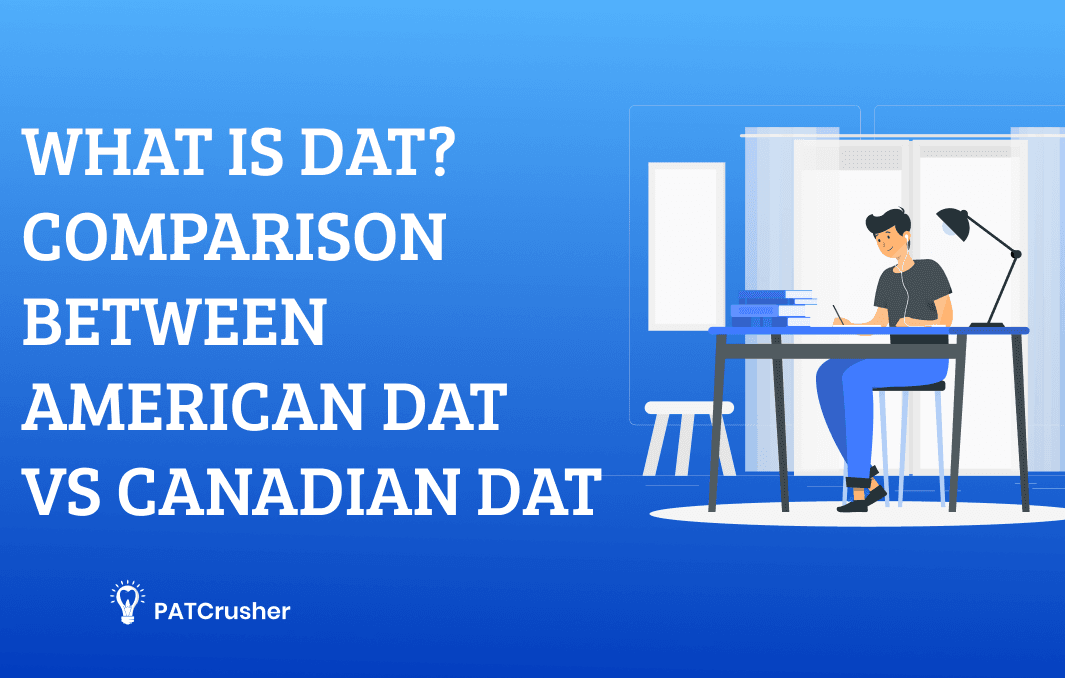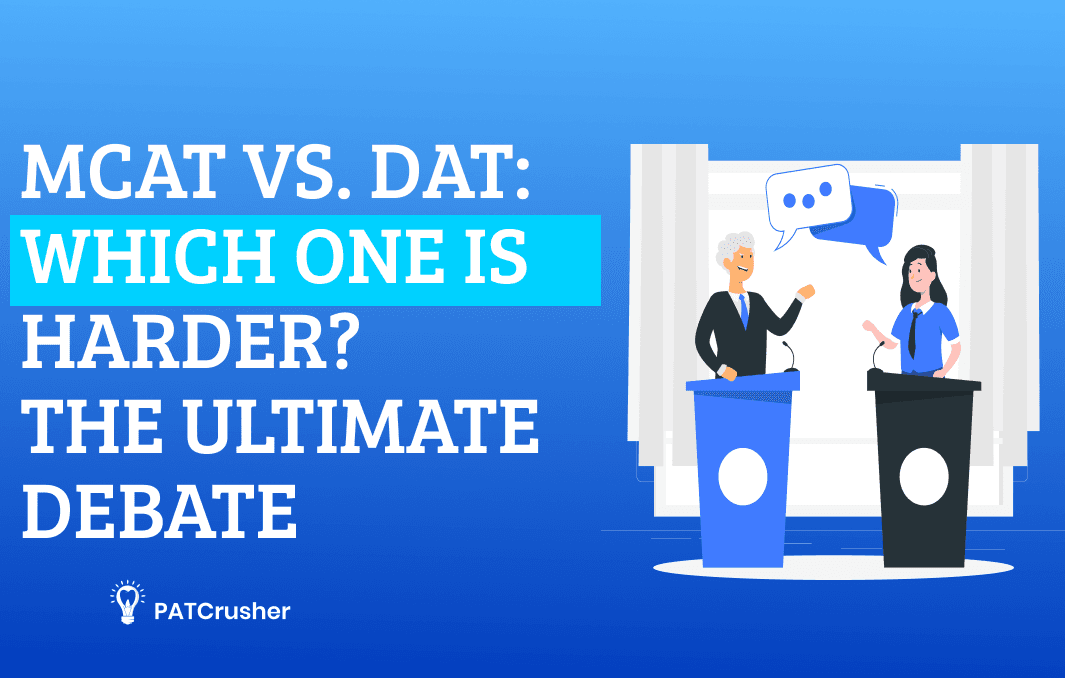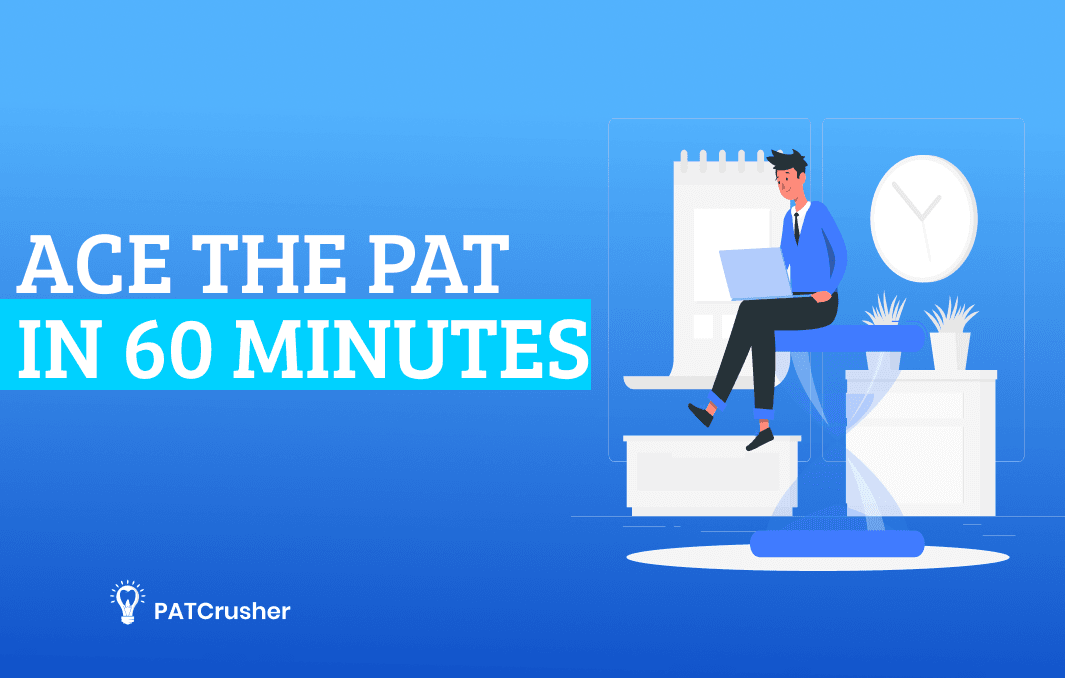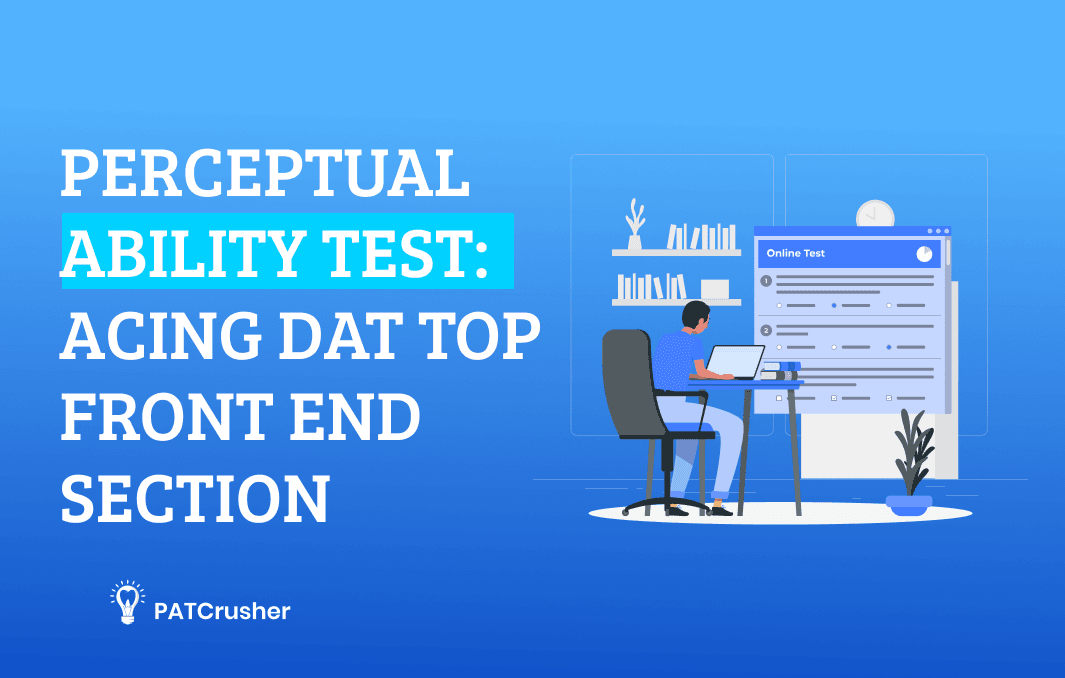
With any sort of exam “start early” is something that is mentioned over and over again. This is so that we have an ample amount of time to properly study our exam materials and have surplus time to review it all. Early preparation is recommended for the DAT too. However, sometimes due to unforeseen and unavoidable circumstances, we are unable to start our prep for exams early. And then we realize that we have an important exam coming up in a few weeks and not nearly enough time to comfortably revise. In these situations, we need to make the most of whatever available time we have left. But the process of organizing your study schedule can sometimes be an overwhelming process. Which is why this article exists. This article describes the DAT study schedule for three different lengths of the preparatory period- 12- 15 weeks, 8-week, and 1 month.
How to prepare for the DAT with a time crunch
Here are a few things that you should consider and perform as part of your preparation for the DAT regardless of how much time you have before the exam.
- Treat your preparation for the dot as a full-time job this means try putting in at least 40 hours of studying per week. While this is the recommended studying time do not overwhelm yourself by overworking. Consistency is key. You might not want to study for eight hours on a particular day but want to study more than 8 hours on another day then do that. The idea is to study every day, to stay in touch so that you don’t forget the previous material nor do you deter from your study flow.
- Before you jump in and start studying, or before you start creating your DAT study schedule go over the syllabus. Then mark the chapters that you think require more of your attention and mark the chapters that you find relatively easy. When preparing your study schedule be sure to complete the more difficult chapters and topics early on and leave the easier ones for later.
- Picking the right study materials is crucial. If you try and study everything you will be overwhelmed regardless of how much time you have to prepare. Therefore, it is imperative that you go over the contents of each available DAT preparation review material and choose the correct one for you. If need be contact someone who already sat for the DAT or consult any of the many websites dedicated to DAT prep.
- While studying one topic at a time may seem like a very organized approach to revision it can often be counterproductive. Studying one topic at a time can be monotonous and can lead to boredom, which causes your brain to lag resulting in poor information retention. So create your DAT study schedule in such a way that it covers all the subjects in an equally distributed pattern.
- Practice, practice, then practice some more. You should practice questions every day. You will learn more from questions that you get wrong than from questions that you are able to answer correctly. Practice will help you understand and learn how to approach a question, it will improve your time management and most importantly it will teach you what not to do. It is suggested that you take at least three full-length practice tests before the actual exam.
- Falling sick before your big exam is a huge concern for many candidates. Therefore, it is crucial that you take care of your body and your health. Drink lots of water, and maintain a well-balanced diet. Also, try to get at least eight hours of sleep every day.
The DAT study schedule

As mentioned above this article gives you the general guidelines for creating a study schedule over three different lengths of preparatory periods.
Conquer the DAT in a month!
Normally a candidate sitting for that exam prepares for over 200 hours. However if for some reason you only have a month to prepare for the DAT, fear not! Preparing for the DAT in a month can be very difficult but it is not impossible. Especially if you already have a strong base in math And are willing to study dedicatedly for a significant amount of time every week.
So here is a weekly guideline you can use to prepare for the DAT in a month.
WEEK 1
- Start off by taking a practice test so that you can understand the question pattern and the topics covered. You will find some great sample tests here. Whatever you score in these practice tests can be used as your baseline score. Your job will be to improve and move up from this score.
- By taking this initial practice test you will also be able to identify the topics that are difficult for you. Now you can allocate greater amounts of study time to these topics.
- Study at least three hours a week, for six days a week. Give yourself one day to recharge.
- Dedicate one day of this week to each of the following :
- Perceptual ability: there are six subsets for PAT. Learn what each subset involves.
- Biology: cell and molecular biology
- General chemistry: atomic and molecular structure, periodic trends, and stoichiometry
- Organic chemistry: nomenclature, stereochemistry, aromaticity, and bonding
- Quantitative reasoning: numerical calculations, algebra, and conversions
WEEK 2
·Dedicate 1 whole day this week to the following:
- Reading comprehension: research and practice strategies that will help you go through the comprehension passages quickly and figure out which one works best for you.
- Perceptual ability: Practice various strategies and simple questions to improve accuracy and speed.
- Biology: anatomy, physiology, and developmental biology
- General chemistry: Equilibrium, thermodynamics, liquids and solids and gases, kinetics
- Organic chemistry: Properties of molecules and reaction mechanisms.
And then on the 6th-day practice a full-length test. Try recreating exam like conditions to help improve your time management and deal with the stress of exam conditions.
WEEK 3
Start off this week by reviewing all that you have learned so far and by doing a survey of your progress thus far. See where you have improved and which topics and areas require more improvement. Then revise your study plan accordingly allocating more time and energy to those areas.
Dedicate one day of this week to each of the following:
- Perceptual ability: practice more sample questions to improve speed and accuracy
- Biology: genetics, ecology, evolution, behavior, and diversity of life
- General chemistry: redox reaction, acids and bases, and nuclear reactions
- Organic chemistry: reactions including multi-step ones
On the 6th day take another full-length practice test and time yourself and then compare your test results from the previous week to see if you have improved.
WEEK 4
- Start off the 4th week by reviewing everything that you have covered thus far, and look over your practice test to figure out the parts that require improvement.
- Simply dedicate one full day in this last week to quantitative reasoning and study geometry, trigonometry, probability, and statistics.
- For the remaining number of days, all you have to do is review and practice. Especially focus on the parts that you still struggle with practicing over, and over again. Do not try to learn anything new in this time period because it will be futile. Instead, you risk forgetting all that you have learned thus far.
- Take the day before the exam off. Sit back, relax let your brain recharge, and recuperate. Eat healthy get enough sleep to wake up the next day and ace the exam.
The DAT study Schedule- 6-week study schedule
This six-week study schedule is based on how one dental student prepared for the DAT in six weeks. This study schedule requires you to put in about 50 hours of work every week for six weeks.
A few points to note-
- Study dedicatedly from Monday through to Friday and take Saturday off to help recharge your brain.
- Then give a full length timed practice test on Sunday, preferably around the same time you are expecting to sit for the actual DAT exam.
Here is a weekly breakdown of how she had approached the DAT prep-
WEEK 1-2
- Start off by taking a full-length practice test to gauge where you are at. The score on this test will be your baseline. The idea is to improve this score over the course of the next six weeks.
- Choose the 1st and 2nd week as your refresher to go over the topics that you have previously studied but may have forgotten. Watch various videos on the topics that are a part of the doc syllabus which you have previously studied Practice questions on those topics.
- Also, start looking into the topics that you find difficult because these topics will require more time and energy on your part to master.
WEEK 3
- This week is dedicated to reviewing everything you have covered in the first 2 weeks.
- It is also dedicated to doing lots of practice tests.
- Memorize any formulas or procedures you might need for the test. Especially involving general chemistry and quantitative reasoning.
WEEK 4-6
- Focus on practice questions and understand the material you were studying
- Practice more PAT questions
- Go through your notes and make flashcards for the parts you are unsure of
- Practice math regularly. Make sure to set aside a certain number of questions to practice every day.
- Go over everything you have studied and review and revise right before the exam.
The DAT study Schedule- 12-15 weeks study schedule
This study schedule requires you to put in about 20 hours of work every week. This DAT study schedule especially helpful for candidates who are full-time students or have jobs and cannot dedicate all their time to DAT preparation.
- Like with every other study schedule mentioned in this article start off by taking a practice test to get your baseline scores and an idea of where you stand with your preparation.
- Initially focus on the subject or the subset you consider yourself to be the weakest at. For some people this is organic chemistry for a lot of others this is the perceptual ability part. You know what you need to focus on the most and proceed accordingly.
- Watch conceptual videos, do topical practice questions, and overall get familiarized with the concepts.
- Sit for a full length timed practice test at the end of each week.
- Dedicate about 1 to 2 hours every day to studying. This may seem like a very relaxed schedule but don’t worry you have plenty of time so it’s okay.
- After each study session and practice test, go over the part that you seemed to be having a difficulty understanding. Revises these parts thoroughly.
- As you approach your test date you should pick up your pace and dedicate a few more hours every day to preparing for the DAT.
- Make summary sheets as you study to make revision easier for you.
- As you near your test date, try taking at least one full length, timed test every 4 days.
- Remember to take a few days off to recharge and take it easy so that you don’t burn out.
Final thoughts
All the study schedule formats discussed here are just suggestions and guidelines. Use these to base your actual DAT schedule on. Everyone has different needs, different areas to focus on. Make sure your study schedule is specially tailored to cater to your needs.












































